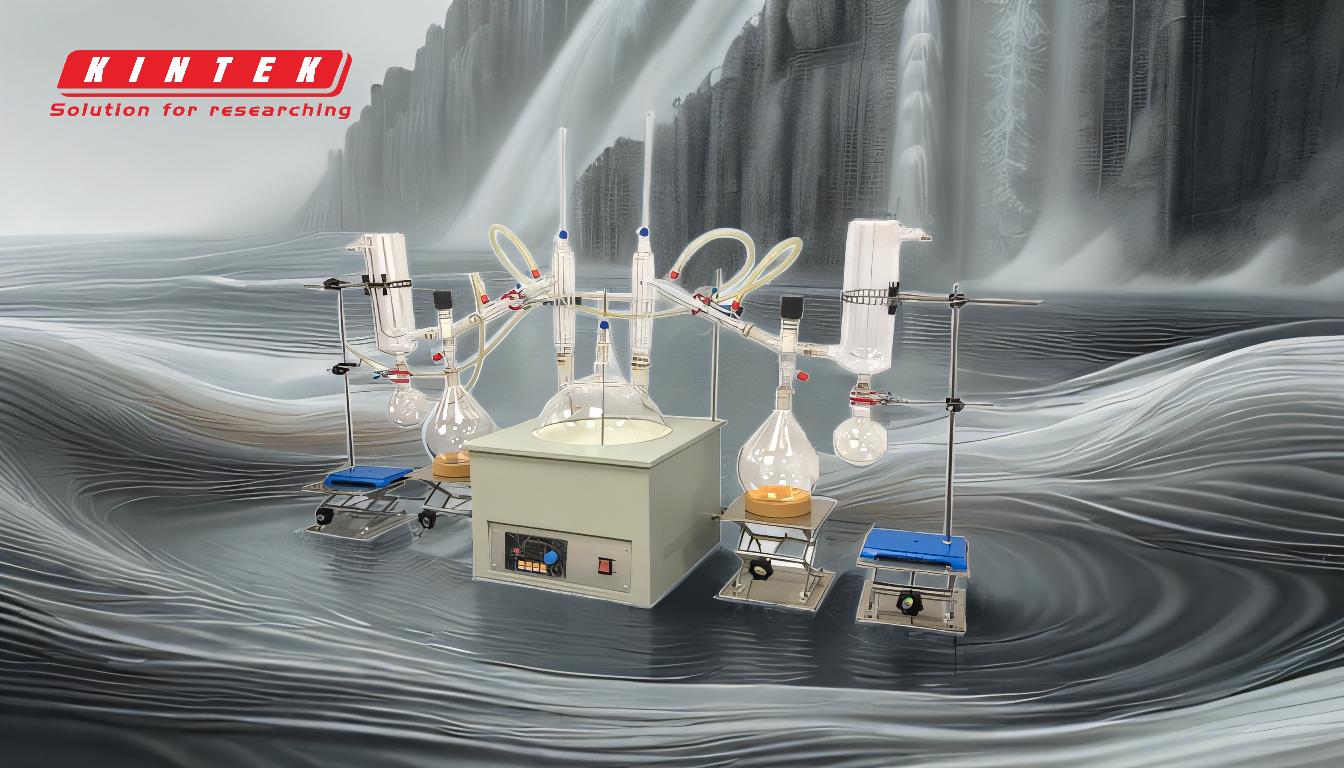Short-path distillation of cannabinoids typically operates within a temperature range of 130-180°C (266-356°F). This range is optimal for separating and purifying cannabinoids without causing degradation. However, the equipment, such as an oil circulating TCU, can achieve temperatures up to 343°C (650°F). It is crucial to note that the maximum recommended temperature for short-path distillation is 220°C. Exceeding this limit can lead to compound degradation and safety hazards. The process requires careful monitoring, as slowing distillation may indicate the end of a fraction, necessitating adjustments. Precautions, such as avoiding direct contact with heated equipment, are also essential to ensure safety.
Key Points Explained:

-
Optimal Temperature Range for Cannabinoid Distillation:
- The ideal temperature range for short-path distillation of cannabinoids is 130-180°C (266-356°F). This range ensures efficient separation and purification of cannabinoids while minimizing the risk of thermal degradation.
- Temperatures within this range are suitable for preserving the integrity of cannabinoids, such as THC, CBD, and other minor compounds, ensuring high-quality end products.
-
Equipment Capabilities and Limits:
- Short-path distillation systems, particularly those using oil circulating TCUs, can achieve higher temperatures, up to 343°C (650°F). However, these extreme temperatures are not typically used for cannabinoid distillation due to the risk of degradation.
- The maximum recommended temperature for short-path distillation is 220°C. Exceeding this threshold can lead to:
- Degradation of cannabinoids: High temperatures can break down sensitive compounds, reducing potency and altering the chemical profile.
- Safety hazards: Excessive heat increases the risk of equipment failure or accidents, such as oil leaks or fires.
-
Monitoring and Adjusting the Process:
- During distillation, it is essential to monitor the process closely. If the distillation rate slows, it may indicate the end of a fraction, meaning the target compounds have been extracted.
- At this point, adjustments should be made, such as reducing the temperature or stopping the process, to avoid overheating and degrading the remaining material.
-
Safety Precautions:
- Short-path distillation equipment operates at high temperatures, often heated by hot oil. Direct contact with the equipment can cause severe burns.
- Operators should:
- Use protective gear, such as heat-resistant gloves.
- Avoid touching heated surfaces.
- Ensure proper ventilation to prevent the buildup of flammable vapors.
-
Heating Mantle Temperature Range:
- The heating mantle, a critical component of short-path distillation systems, typically operates within a range of 100°C to 250°C (212°F to 482°F).
- This range provides the flexibility needed to achieve the precise temperatures required for cannabinoid distillation while accommodating variations in the boiling points of different compounds.
By adhering to these guidelines, operators can ensure efficient, safe, and high-quality cannabinoid distillation processes.
Summary Table:
| Key Aspect | Details |
|---|---|
| Optimal Temperature Range | 130-180°C (266-356°F) |
| Equipment Capabilities | Up to 343°C (650°F), but max recommended is 220°C |
| Heating Mantle Range | 100°C to 250°C (212°F to 482°F) |
| Safety Precautions | Use heat-resistant gloves, avoid touching heated surfaces, ensure ventilation |
| Monitoring Tips | Slow distillation may indicate the end of a fraction; adjust temperature |
Need help optimizing your cannabinoid distillation process? Contact our experts today for tailored solutions!











